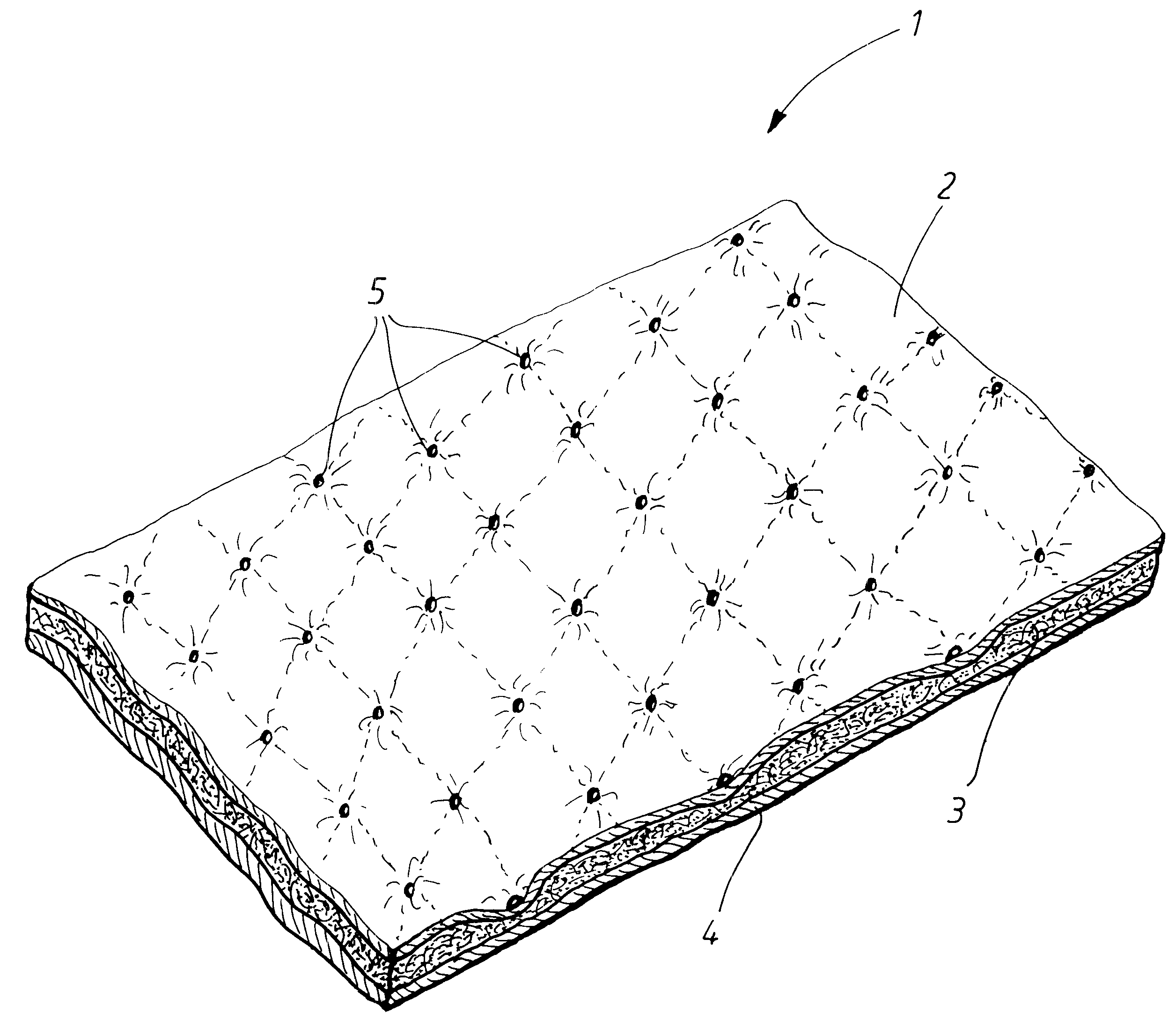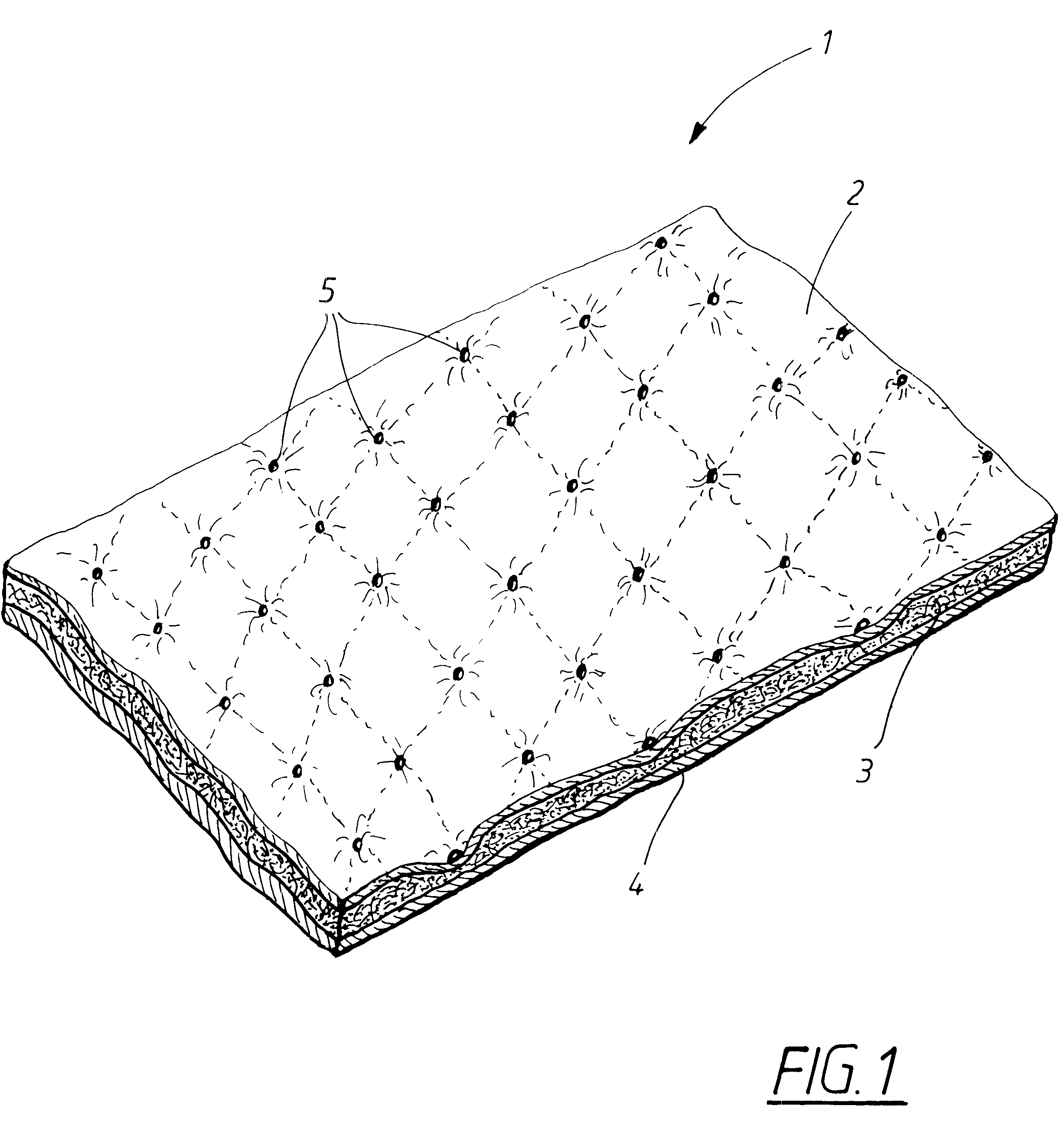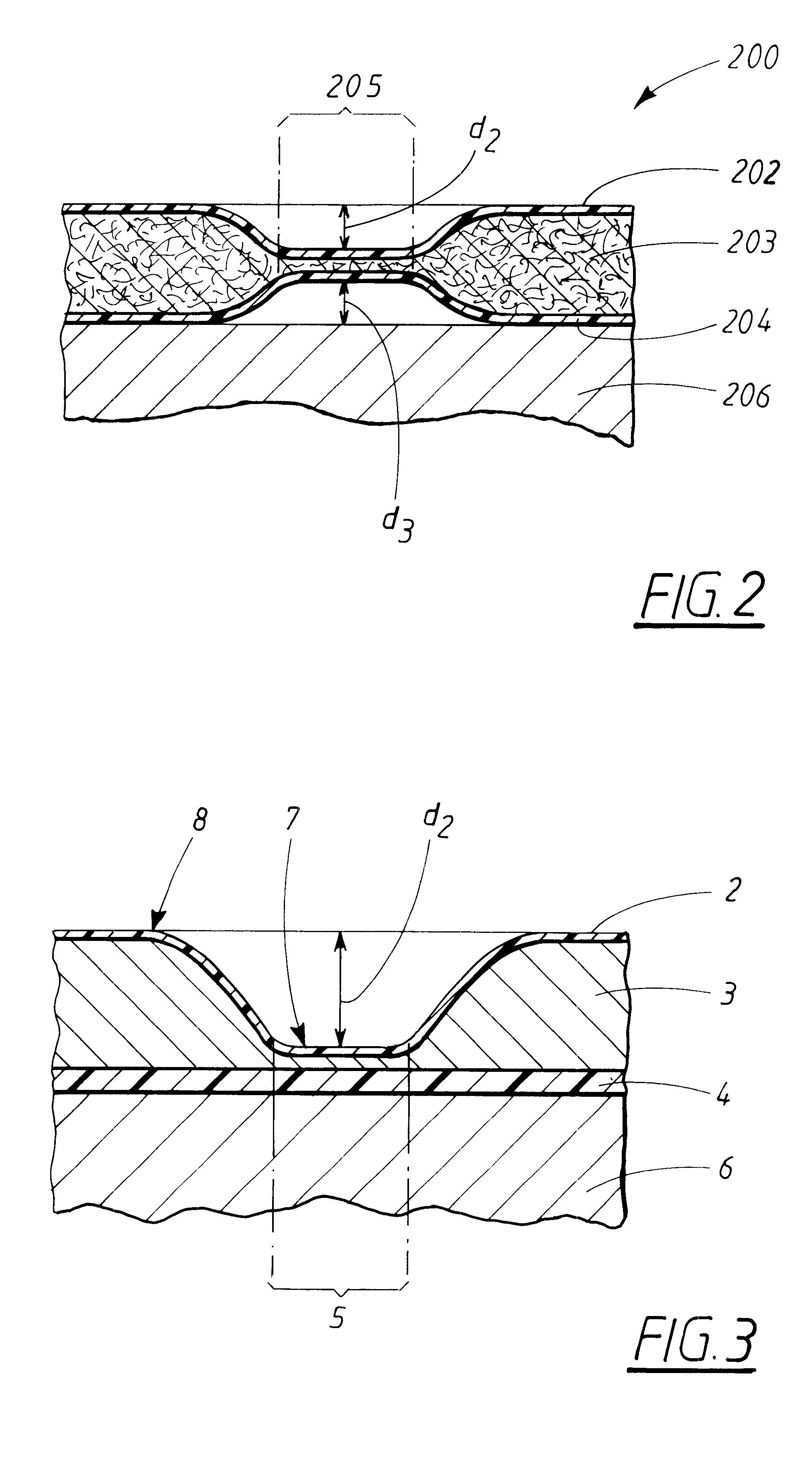Absorbent product comprising at least one thermoplastic component to bond layers
a technology of absorbent products and thermoplastic components, applied in the field of absorbent products, can solve the problems of not being able to achieve good weldability in the integral material layer simultaneously, unable to pass liquid which meets the surface-layer laminate, and unable to meet the surface-layer laminate. , to achieve the effect of high surface dryness, good resistance to re-wetting, and high liquid-permeability
- Summary
- Abstract
- Description
- Claims
- Application Information
AI Technical Summary
Benefits of technology
Problems solved by technology
Method used
Image
Examples
Embodiment Construction
The surface-layer laminate shown in FIG. 1 comprises a liquid-permeable casing layer 2, a liquid-transfer layer 3 and a base layer 4.
The casing layer can be made from any material which is conventionally used as liquid-permeable outer casing on absorbent products. The casing layer 2 can thus be made up of a perforated plastic film, a plastic or textile material net or a non-woven layer. The casing layer preferably contains some thermoplastic component such as polyethylene, polyester or polypropylene. The thermoplastic component expediently accounts for at least 30 percent by weight of the casing layer 2, since the bonding-together of the casing layer 2 and the underlying liquid-transfer layer 3 is facilitated when both layers 2, 3 contain thermoplastic material. A casing layer made from non-woven material can additionally contain natural fibres, such as cellulose or cotton, or non-thermoplastic synthetic fibres, such as polyurethane, nylon or regenerated cellulose.
The liquid-transfe...
PUM
| Property | Measurement | Unit |
|---|---|---|
| homogenous | aaaaa | aaaaa |
| thickness | aaaaa | aaaaa |
| permeable | aaaaa | aaaaa |
Abstract
Description
Claims
Application Information
 Login to View More
Login to View More - R&D
- Intellectual Property
- Life Sciences
- Materials
- Tech Scout
- Unparalleled Data Quality
- Higher Quality Content
- 60% Fewer Hallucinations
Browse by: Latest US Patents, China's latest patents, Technical Efficacy Thesaurus, Application Domain, Technology Topic, Popular Technical Reports.
© 2025 PatSnap. All rights reserved.Legal|Privacy policy|Modern Slavery Act Transparency Statement|Sitemap|About US| Contact US: help@patsnap.com



